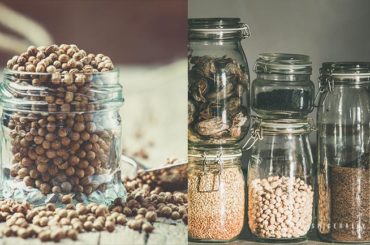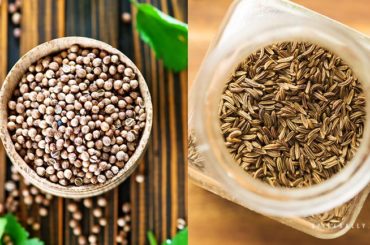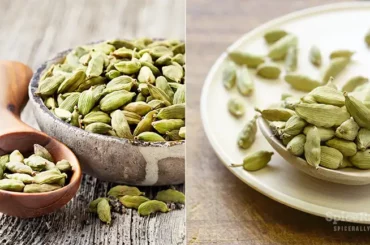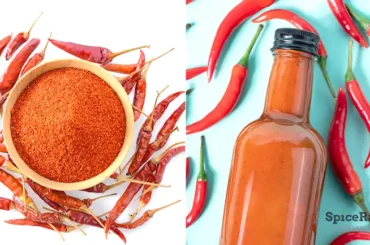When we taste a certain food, from either cuisine in the world, if spices are in it, we know we laid our hands on the right plate! Usage of these excellent flavorings is not something that started recently but ran back to the days of antiquity. Every spice is unique and has its own flavor, aroma, and color. Therefore, it is essential to identify each of them separately.
There are basically seven categories of spices. And, we are going to elaborate on the main five categories of them through this article. They are in accordance with their:
- Degree of taste
- Economic significance
- Season of growth
- Growth habits
- Parts of the plant used
Thus, make the best use of this feature to obtain knowledge on the unknown facts about the most familiar spices you use in your regular meals. At the end of this, you will be sophisticated on the main categories of spices, about the main flavorings that are used in prominent cuisines in the world, and many more.
What Are The Categories Of Spices?
A spice is a fruit, seed, bark, root, or other plant material employed to savor or color food. And, spices are classified from herbs, which are the flowers, leaves, or stalks of plants utilized for seasoning or as a garnish. Spices are seldom used in medicine, religious customs, or in industries like cosmetics or perfume. However, no source exactly says when humans initially started including spices and herbs in their food. But, it is evident that by the time of the ancient Greeks and Romans, many spices and herbs had reached into use to flavoring food and beverages.

For the convenience of identification and scientific purposes, spices are classified into a few categories. Thus, we thought of picking five of them and explaining what could be beneficial for you through this article. They are as follows:
- Degree of taste – Spices are classified according to the different types of flavors they possess. The flavors of spices again go into two subgroups – basic tastes and supporting flavors.
- Economic significance – Grouped according to the contribution they deliver towards the global economy.
- Growth habits – Categorized upon the modes of their growth.
- Parts of the plant used – Classified according to the section of the plant the spices originate from.
- Season of growth – The spices are assorted by the particular season they grow.
Ceylon Cinnamon contributes to the economy of Sri Lanka extensively. So, if you are curious to learn about other Ceylon Spices, you are just one click away from here.
Spice Categories Chart
The chart of spice categories that we will present to you in this section will explain and provide examples to each group.
Degree of taste
Basic Flavors Examples
| Hot spices | Red chili Cayenne pepper Black and white pepper Ginger Mustard Wasabi Sichuan Peppercorns |
| Mild Spices | Paprika Coriander |
| Bitter Spices | Black cumin Ajwain Fenugreek Celery Seeds Mace Mustard Turmeric |
| Sweet Spices | Anise Caraway Cassia cinnamon Cloves Allspice Fennel Green Cardamom Nutmeg |
| Aromatic Spices | Cardamom Cinnamon Allspice Clove Cumin Dill Fennel Fenugreek Mace Nutmeg Garlic |
Supporting Flavors
| Earthy | Cumin Saffron Turmeric Achiote |
| Cooling | Star Anise Fennel Sweet Basil Dill Anise |
| Fruity | Coriander Fennel Star anise Nigella Tamarind |
| Foral | Lemongrass Saffron Sweet Basil |
| Pungent | Garlic Ginger Horseradish Mustard Paprika Star anise Wasabi Nutmeg Allspice Dill Seeds Epazote Chilies Black pepper |
| Nutty | Poppy Seeds Ajwain Caraway Seeds Coriander Cumin Fenugreek Mustard Seeds Sesame Seeds |
| Piney | Black pepper |
| Herbaceous | Fennel seeds Dill weed |
| Spicy | Cassia cinnamon Cloves Coriander Cumin Ginger Nutmeg |
| Woody | Ceylon cinnamon Cardamoms Cloves Sichuan Peppercorns |
| Sulfury | Asafoetida Chives Garlic |
Economic Significance
| Major spices | Black pepper Chilies Turmeric Ginger Cardamoms |
| Minor spices | every other spice except for the ones that mentioned under major spices |
Growth habits
| Trees | Cinnamon Nutmeg Garcinia Cloves |
| Shrubs | Chilies |
| Rhizomatous | Turmeric Ginger Galanga |
| Herbs | Ajwain Coriander Tenet Fenugreek Chilies |
| Climbers | Black pepper Green peppercorns |
Parts of the plant used.
| Bark | Cinnamon |
| Fruit | Cardamom Cumin Fennel Ajwain Chilies Tamarind Star anise |
| Rhizome | Turmeric Ginger Galanga |
| Seed | Fenugreek Cardamom Mustard Nutmeg Black pepper |
| Stigma | Saffron |
| Bulb | Garlic |
| Unopened flower bud | Cloves |
| Rind | Mace Kokum |
| Resin | Asafoetida |
| Stem | Celery Cilantro |
| Root | Horseradish |
Season Of Growth
| Annual spices | Cumin Fennel Coriander Mustard Ajwain |
| Perennial Spices | Cinnamon Turmeric Ginger Black pepper Saffron Clove Nutmeg Asafoetida |
Note- In addition to these categories, there is another sub-group of spices which is known as colorant spices. Basically, turmeric and red chili powder belong to this category.
Turmeric and red chili powder are staples in Indian cuisine. Check out this article here if you are interested in knowing about the Top 10 Indian Spices.
How Many Types Of Spice Are There?
There are over eighty types of spices around the world. The best cuisines in the world use unique flavorings that have trademarked their dishes. Apparently, the usage of spices is the second most important event that has occurred in the world of culinary. The first was the use of salt- the most prominent taste enhancer. In fact, spices can upgrade the taste and appeal of insipid foods or even in ruined food. Interestingly, zesty tangs arouse salivation and support digestion.
Moreover, hot spices can provoke sweating, which may even create a comfortable sensation in sultry climates. And, on the other hand, they can add a feeling of inner warmness when employed in prepared foods in cold temperatures. However, the eighty spices that we were talking about fall under one or a few categories mentioned in the above section. And, it is evident that a particular spice has several flavors, and they do not confine to one flavor profile. This is another plus factor as to why these flavoring agents do enchantments with our diets!
Just like spices as a whole, seasoning blends that are made out of spices and herbs are equally important when cooking. If you would like to spend some minutes, you can check out our article, here, about the difference between Cajun and Creole seasoning.
What Are The 3 Types Of Spices- The Three Main Spices That Have Won The Best Cuisines In The World.
The kitchen is one of the prominent places at home that unites and strengthens the entire family together. The palatability of foods prepared in a kitchen is a key determinant in safeguarding a family’s happiness. When talking in terms of the deliciousness of the food, spices literally contribute in a way that cannot even be imagined.
Therefore, the home cooks and chefs in well-reputed cuisines around the world use spices to flavor and aromatize their dishes in order to satisfy their loved ones or customers. So, now let us have a look at the top ten cuisines in the world and their best-used three spices.
| Cuisine | Top three spices used |
| Italian | Anise Basil Garlic |
| French | Nutmeg Saffron Garlic |
| Thai | Galanga Turmeric Ginger |
| Indian | Red Chili Turmeric Cumin |
| Mexican | Cumin Garlic Epazote |
| Japanese | Wasabi Ginger Garlic |
| Greek | Coriander Cinnamon Cumin |
| Spanish | Cumin Cinnamon Black pepper |
| USA | Paprika Black pepper Allspice |
| Chinese | Chilies Garlic Ginger |
Thai cuisine is a wonderful place that makes use of many spices. So, if you need to discover more, click here for a detailed version of the Thai Spices.
Summing-Up
As we presented you throughout this article, we hope you understand that spices are the conquerors of our diets. In fact, they have unique flavor profiles, colors, aromas, and textures that could give life to a certain dish. The categories that we have shared with you in the above sections will help you acquire better knowledge about their flavors, origins, and growth. When you know what spices and how to include them in a particular food, you will literally make yourself a perfect master chef!




